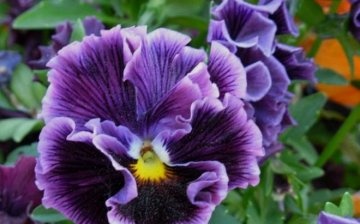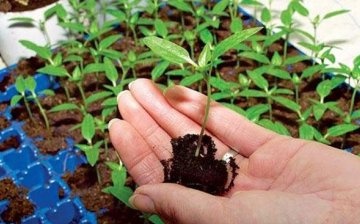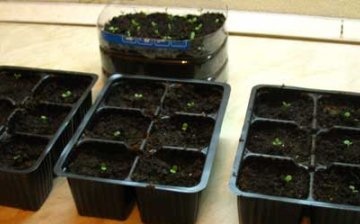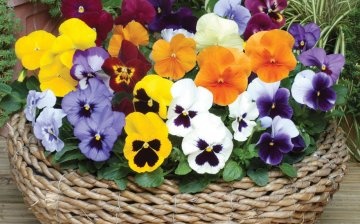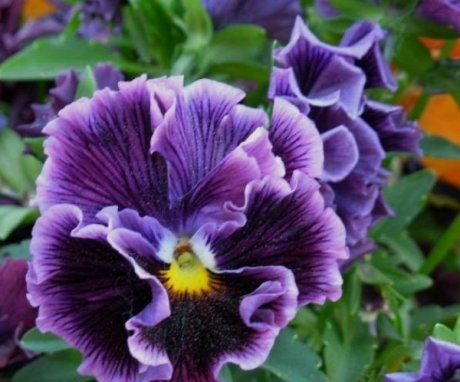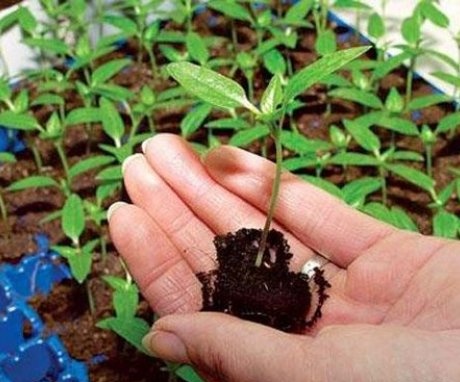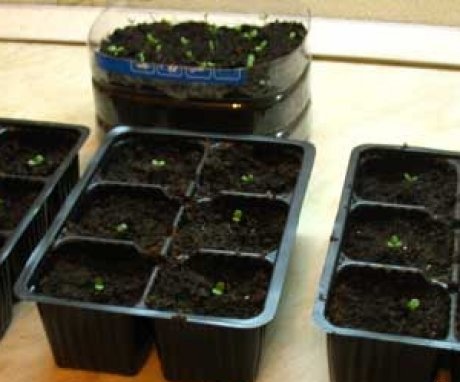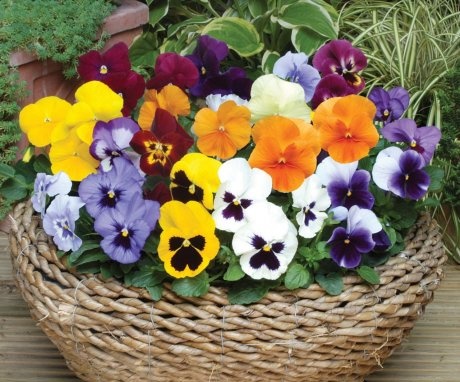Viala flower: varieties, care and growing from seeds
Viola has long been considered a mysterious flower. Its second name is "Pansies". These flowers are widespread, and this amazing plant can be grown without much difficulty in your garden. Growing viola from seeds is not a very laborious process, but there are several subtleties to it.
Content:
- Viola varieties and varieties
- Preparing the soil for planting seeds
- Germinating viola seeds
- Viola care after disembarkation
Viola varieties and varieties
First of all, you need to decide on choice of variety, since the viola can vary greatly in the shape and color of the buds. In addition, different varieties tolerate growth conditions in different ways, they also begin to bloom at different times.
The most common and favorite are the following varieties:
- Variety group "Trimardo". It includes such varieties as "Adonis" with turquoise flowers "Cardinal" with dark red buds, as well as "Morenkening" - one of the most mysterious varieties with black buds.
- "Hemalis" is a winter-hardy variety group that includes varieties with sky blue, dark red or white flowers, a wide variety of shades will allow you to choose the best flower bed decorations.
- The "Swiss" varieties are distinguished by their large bud size. This group includes varieties, the diameter of flowers in which may be equal to 8 cm, they will become a personal decoration for a flower bed.
- The Viola aromatic variety has also become widespread: one of its advantages is the magnificent aroma of flowers.
- In addition to the usual varieties, you can also purchase seeds for growing the latest achievement of breeders: ampelous viola. It is suitable not only for flower beds and alpine slides, such a plant will become an ornament for balconies and window sills, as it can be placed in an ordinary flower pot. Flowers are collected in a voluminous white ball, this gives the plant an unusual and very beautiful look.
If you choose the Hungarian violet, it will bloom throughout the summer season, other varieties are classified as early-flowered or late-flowered. A huge varietal variety will allow each grower to choose a plant according to his own taste.
Preparing the soil for planting seeds
All varieties of Viola varieties prefer loamy soil, they grow well on nutrient soils with a lot of mineral fertilizers. It is important to know what conditions are not suitable for this plant.
Any viola very poorly tolerates the following factors:
- Too abundant watering, as a result of which moisture stagnates in the soil. In this case, the soil should be moistened, drought for viola will also become destructive. To maintain an optimal balance, it is worth taking care of creating a drainage layer.
- Insufficient illumination. This is a light-loving flower, so it is better to place the flower bed on the south side. In the absence of the sun, the viola will grow slowly, it does not tolerate shading from other plants. But if you choose an open place for her, you can achieve a good result.
- Organic fertilizers fresh. It is necessary to provide the soil with mineral fertilizing on schedule, but it is important not to overdo it.
Seedlings can be germinated at home, for this it is very convenient to use peat tablets.
Peat is an ideal growing medium for plants, and it is also very convenient for the gardener. Peat tablets need to be soaked, after which seeds are placed on them and covered with a small layer of soil.
Germinating viola seeds
Viola begin to germinate around February-March, it depends on the variety chosen. If you choose early flowering viola varieties, seeds need to be placed in seedling containers or in the greenhouse. It is necessary to prepare for the fact that fragile plants at first will require constant care: the seeds must be sprayed from a spray bottle, the soil must be constantly moistened.
When the first true leaves appear, the seeds dive, the sprouts should be located approximately 20 cm apart.
Do not tighten with a dive, otherwise the stems will quickly stretch upward and turn out to be very thin and weak. You can immediately plant the seeds in separate pots, this will allow you to move the grown seedlings to the flower bed without any problems. Early varieties are transplanted into open ground at the end of April, when there is no longer any threat of frost. Before planting, the seedlings are hardened for several days, taking them out for a while in the open air.
Late flowering plants are planted in May, while different varieties are best planted at a distance from each other if you intend to collect seeds for subsequent planting. This is done due to cross-pollination: the exchange of genetic material will lead to the fact that the purity of the variety will be compromised, and the next generation of flowers may have unpredictable colors.
Viola care after disembarkation
Plants planted in the sun will have larger buds, but they will also fade much faster. If you choose partial shade, you can enjoy the beautiful buds for longer. Caring for the plant will not be too difficult, and yet viola needs constant care.
Necessary conditions for growth and flowering:
- Daily watering, in which, however, it is not necessary to allow waterlogging of the soil. Excess moisture in the soil contributes to the disease of the plant with a black leg.
- Mandatory weeding of the flower bed will be required, the earth must be loosened to ensure air access to the roots.
- The best fertilizing for viola will be a complex mineral fertilizer, which is applied to the soil twice a month throughout the entire flowering period. Manure is not used as a fertilizer; ammonium nitrate in combination with superphosphate would be the best choice.
- Viola does not like cold very much, so you need to take care of her protection from frost. At the onset of the first cold weather, it must be covered with spruce branches, the roots can also be covered with a layer of sawdust. If the region is characterized by cold winters with deep freezing of the soil, it is better to move the viola to the greenhouse or to the basement for the winter, then it will delight the owner with excellent flowering also the next season.
Viola is a rather capricious plant, but she will appreciate your concern and will delight you with gorgeous flowers.
It will turn into an excellent decoration not only for flower beds, but also for borders, flowerpots and many other decorative elements of the garden. It is not for nothing that it is considered the flower of love; it is one of the most delicate and interesting plants.




